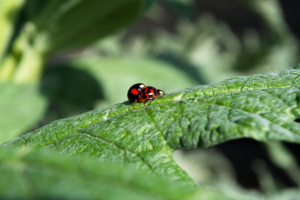Creating a garden that is eco-friendly is a great way to support the environment and create a beautiful outdoor space that benefits both you and the planet. One of the most important aspects of an eco-friendly garden is efficient water use, and one way to achieve this is by putting in a slimline water tank.
Water tanks are containers that collect and store rainwater to use later. By installing water tanks, you can reduce your reliance on municipal water supplies, which can be both costly and damaging to the environment. Not only that, but collecting rainwater can help to reduce runoff, which can lead to erosion and water pollution.
When creating an environmentally friendly garden, it is important to choose plants that are suitable for your climate and soil conditions. Native plants are usually the best choice, as they are already adapted to local conditions and require less water and fertilizer than non-native species. Additionally, native plants help to support local wildlife and promote biodiversity.
Another key factor in creating an eco-friendly garden is reducing your use of pesticides and fertilizers. These chemicals can harm beneficial insects and pollinators, as well as contaminate local water sources. Instead, think about using natural pest control methods, such as planting companion plants and crop rotation. You can also use compost and other natural materials to make your own organic fertilizer.
As well as using rainwater collected in water tanks, there are plenty of other ways to reduce the amount of water you use in your garden. For example, mulching around plants can help to retain moisture in the soil, while using a drip irrigation system can deliver water directly to the roots of the plants, reducing waste. You can also use water-efficient gardening techniques, such as xeriscaping, which involves planting species that are tolerant of drought conditions and need little or even no watering.
When designing your sustainable garden, think about adding features that support local wildlife. For example, putting in bird feeders, bird baths, and native flowering plants can attract a range of bird species to your garden. Installing a bee hotel or planting a pollinator garden can also support bees and other pollinators that are essential for the health of ecosystems and food production.
Finally, when maintaining your garden, be sure to practice sustainable gardening techniques. This could include using hand tools instead of gas or electric powered equipment, composting waste from your yard, and reducing your use of plastic and other non-recyclable or single-use materials. By practicing sustainable gardening, you can reduce your environmental impact and help to create a healthier planet for many generations to come.
In conclusion, creating an eco-friendly garden is a great way to support the environment and create a beautiful outdoor space to enjoy with your friends and family. Not only will your garden benefit the planet, but it will also provide a peaceful and rejuvenating space for you and your loved ones to enjoy.
Note: This is a collaborative post


No Comments